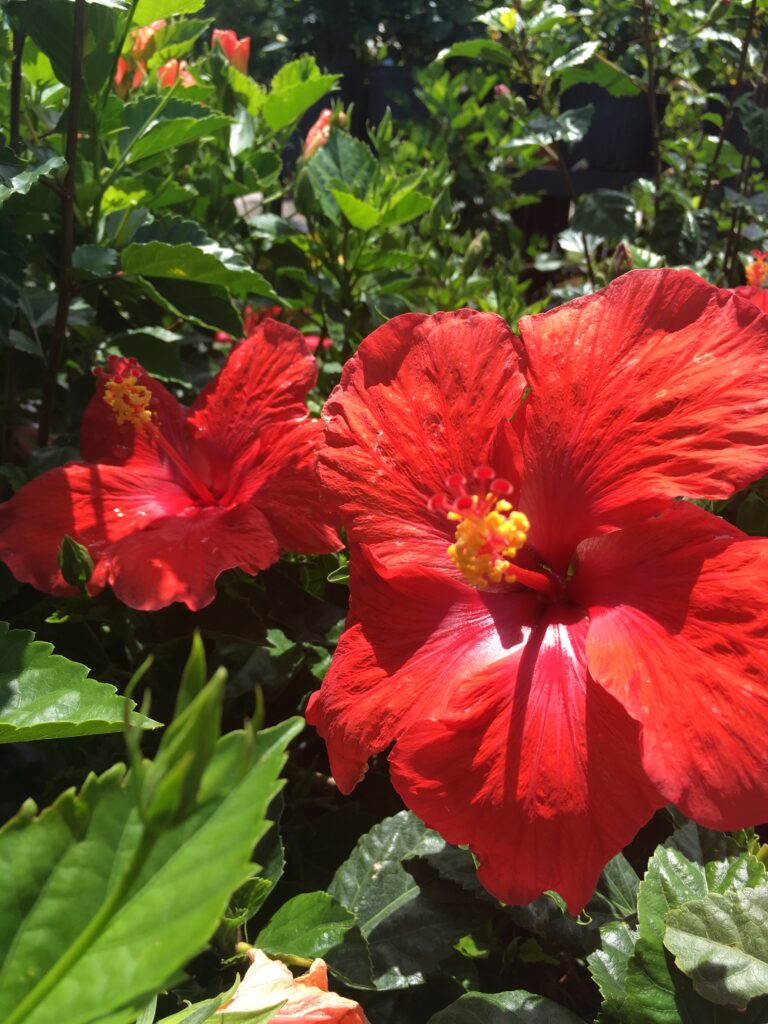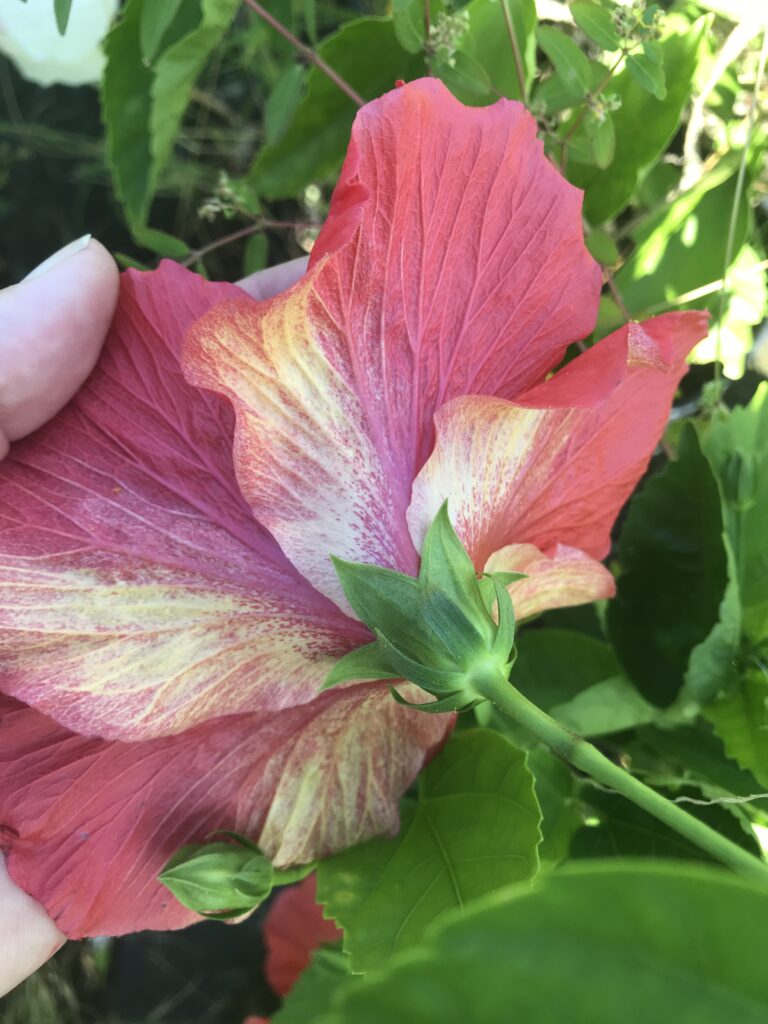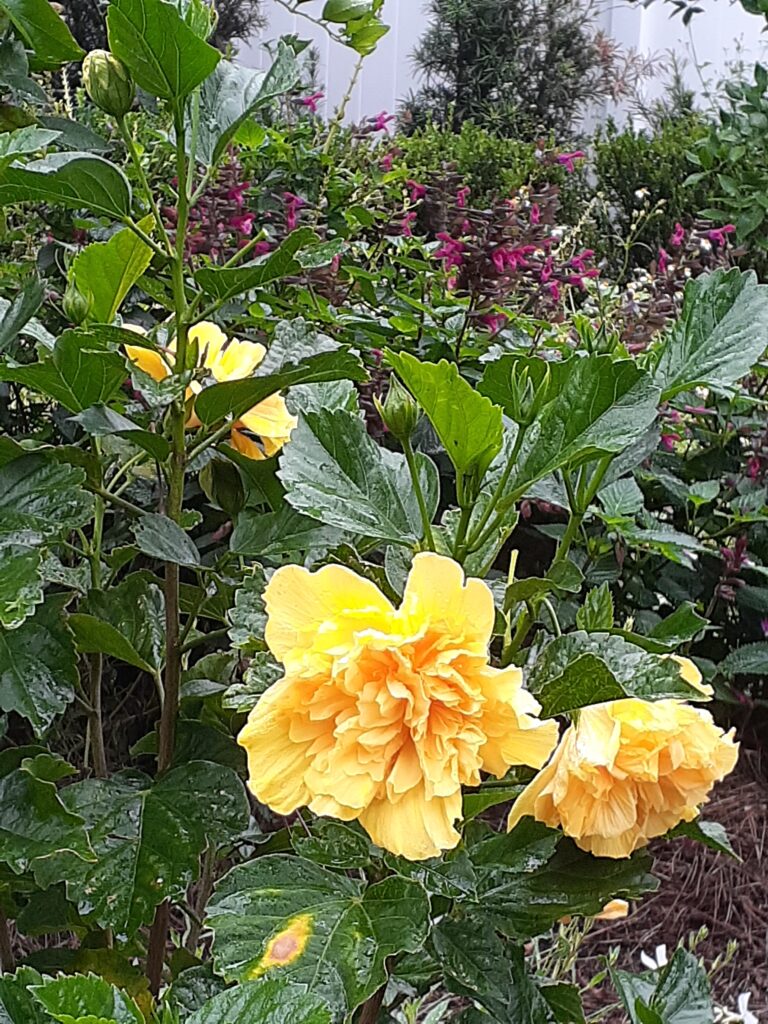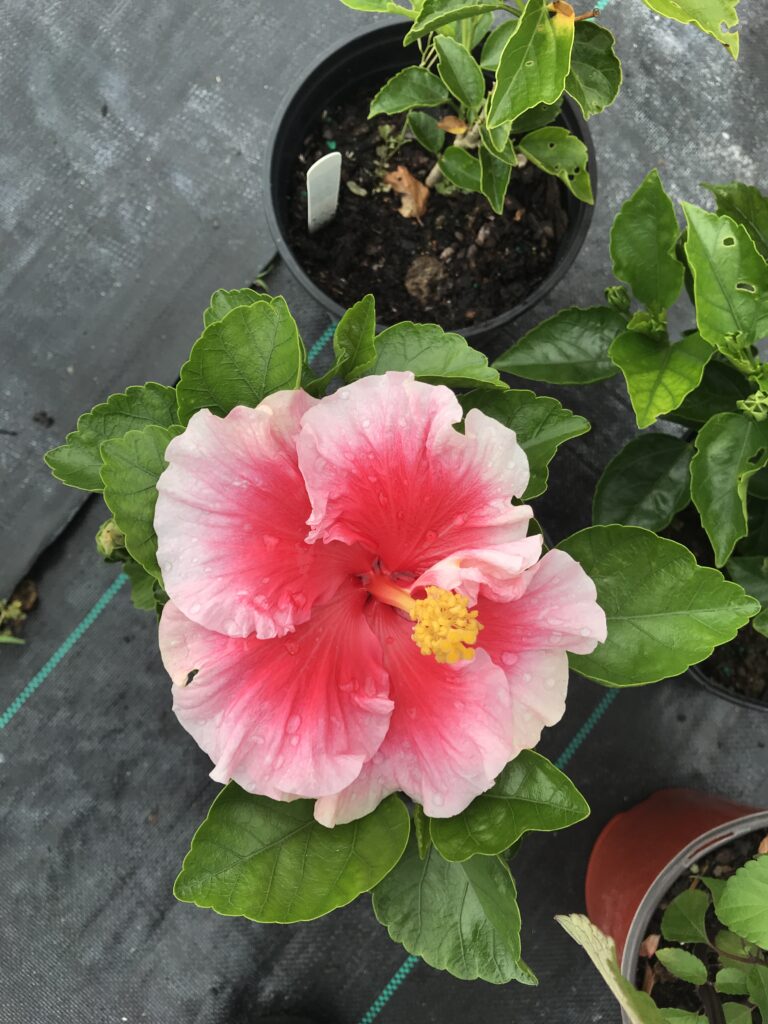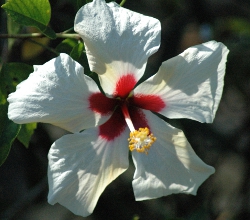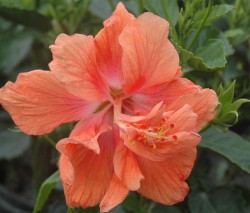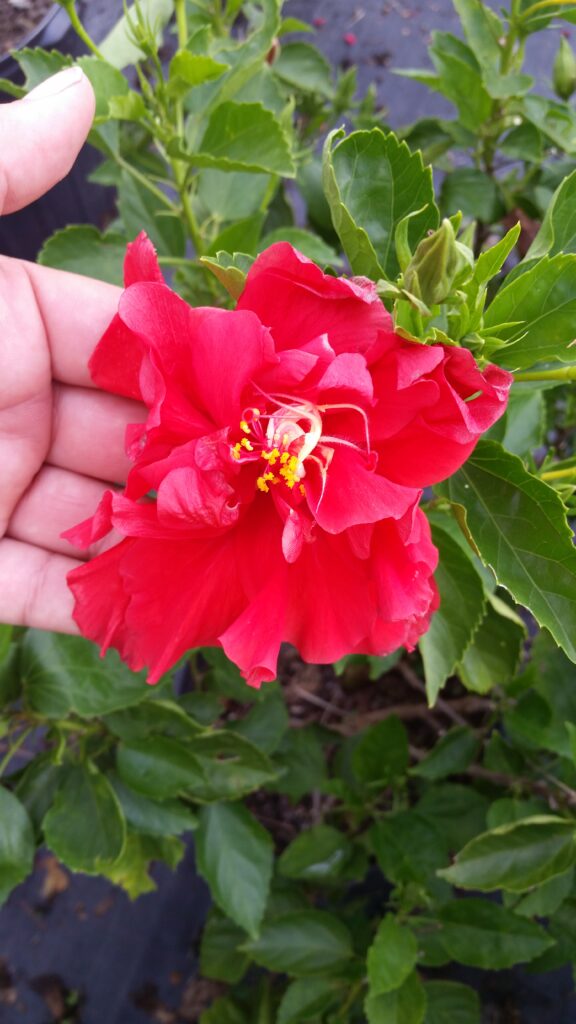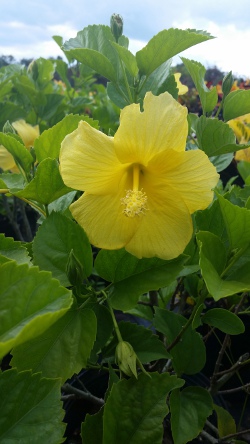S & J Nursery’s Guide to Growing
Hibiscus rosa-sinensis /
Tropical Hibiscus / Chinese Hibiscus
Plants for Northeast Florida Landscapes
( Hibiscus rosa – sinensis)
Hibiscus rosa – sinensis Plants ,
What are they?
There are many types of Hibiscus plants and each has its own unique characteristics. There are Hibiscus syriacus ( Rose of Sharon), Hibiscus matabilis (Confederate Rose), Hibiscus acetosella ( Redleaf or Cranberry Hibiscus), Hibiscus tiliaceus ( Mahoe or Sea Hibiscus), Hibiscus radiatus ( Hibiscus October Rose) Hibiscus coccineus ( Star Hibiscus or Texas Star), militaris ( mallow), Hibiscus Moscheutos ( Hardy Hibiscus / Perennial Hibiscus) , Hibiscus schizopetalus ( Coral Hibiscus), Hibiscus cannabinus (Kenaf), Hibiscus sabdariffa (Roselle) , Hibiscus grandiflorus ( Pink Swamp Hibiscus ) Did I miss any? Yes, I did, there are hundreds! These are just the few I have had the fun of growing in my garden here in Northeast Florida through the years .
If all those species weren’t confusing enough, there are plants that are not
Hibiscus at all but are called Hibiscus, like Alyogyne ( Blue Hibiscus). And then there are plants that used to be called Hibiscus but are now called Abelmuschus like the Abelmuschus manihot ( Sunset musk mallow). Then what about plants in the Malvaviscus (Turks Cap) or even the Abutilon ( that are so close to Hibiscus even a new gardener would notice the family resemblance of the blooms. Who can keep track? With so many types of Hibiscus they really can be quite confusing. But for most of us here in Northeast Florida, when we think of Hibiscus, we are thinking of the Tropical Hibiscus / Chinese Hibiscus, here in Northeast Florida we just refer to them as Hibiscus but they are what botanists prefer to refer as Hibiscus rosa- sinensis.
Chinese / Tropical Hibiscus flowers instantly bring to mind tropical vacations on sandy beaches with cool breezes! And without a doubt, that is where they grow best, the hotter the weather the happier they seem to be. Native to tropical Asia, hibiscus rosa – sinensis truly are a tropical plant selection. Hibiscus are winter hardy in zones 10-11, so for us here in the Jacksonville and St. Augustine area landscapes, Hibiscus plants may need some winter protection to ensure they survive to regrow again the following season. But with just a little care, these big beautiful flowers can grow successfully in your garden for years on end.
Protecting Your Tropical Hibiscus Plants From Winter Temperatures
When temperatures begin to drop below 30 degrees, hibiscus plants can start to loose leaves, stems will be damaged when temperatures drop below 32 for extended periods of time ( more than just a few hours overnight).
Although hibiscus can regrow from winter damaged plants the following year, here’s a few tips to help you keep these tropical beauties happy and get a head start on next springs growth!
– Never trim your hibiscus plants after August. Never feed your Hibiscus
plants after September. That will cause them to put out a new flush of growth and make them more sensitive to freezing temperatures. The earlier you trim during the summer, the better off your hibiscus plants will be.
– Keep your plants healthy and happy with a slow release plant food like
Osmocote or a granular tropical plant food during the spring and again in summer. Hibiscus are hungry plants, all that flower production takes some nutrition! It is also a good idea to give them a dose of Epsom salt in fall before winter temperatures begin to drop. Healthy plants will take the cold better than a stressed or weak plant and regrow quicker the following spring when cold damaged
– NEVER trim off cold damaged foliage until all danger of frost has passed.
This is essential when dealing with tropical and subtropical plants here in the Jacksonville and St. Augustine area landscape. Removing that damaged foliage just opens up the trunks close to the base of the plant to damage
from the next frost that comes by. I know its not pretty, but those burnt leaves and stems offer protection to the trunk and can be the difference between your plant re-growing in April from the branches instead of July from the root system or even worse, not at all!
– When planted on the South side of the house, under large trees or into microclimate areas where frost will stay off the leaves, your hibiscus may well make it through winter here in the St. Augustine area landscapes with just a bit of protection from a cloth on nights with freezing temperatures.
– Try Planting your hibiscus in the container and lifting them out of the landscape, bring them indoors and enjoy them as houseplants till the weather warms again in spring.
– When leaving your Hibiscus in ground you can protect the base of the stem by loosely piling up straw or hay around the bottom foot of the plant, remove the straw in spring or spread it out as mulch into the surrounding areas. Trim off all damaged stems and foliage, fertilize and your hibiscus plant is ready to get growing.
– If you are not willing to take a risk on loosing your hibiscus plant, or you
live in a more Northern climate, you may want to take more drastic measures to ensure next years plantings! Hibiscus root easily, try taking cuttings from the tips of your plants at the end of summer to plant out next
spring! Here’s how…
-
(around July or August) trim 4- 6 inch long pieces from the tips of your hibiscus rosa – senensis plant you want to overwinter
-
remove the bottom set of leaves
-
place your stem cuttings into a small terra cotta pot filled with moist soil
-
place a few chopsticks in the pot making sure the chopsticks stand up above the foliage of the plant by a few inches
-
cover your pot with plastic wrap then cover over the chopsticks forming a miniature greenhouse.
-
Cuttings should root in 3-4 weeks if they are kept moist, you may need to check the soil if you no longer see condensation forming inside your saran wrap greenhouse. Add water as needed and recover.
-
When the cuttings have formed roots, remove the cover and allow to grow on a sunny windowsill till spring!


